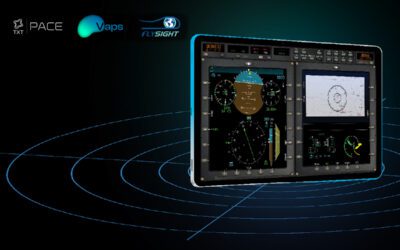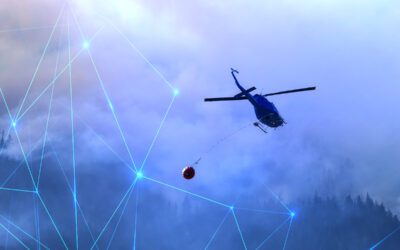Ever since da Vinci pondered the idea of a vertical flying machine back in the 1480s, the concept of vertical flight has fascinated engineers. In fact, the idea goes back before that, to ancient China, where children in 400BC would play with bamboo flying toys that utilise a stick attached to a rotor that spins and creates lift. In 1907, the world’s first ‘Gyroplane’ spluttered to a few feet off the ground. Today, helicopters are a part of everyday life for both military and civilian operations.
In this article, we explore the technology behind helicopter rotors and compare different types of rotors. We’ll take a look at their benefits, how they’re used, the design and control functions, and if there are any drawbacks to vertical flight. We will examine the vital importance of rotor maintenance, and take a look at how rotor technology could improve the helicopter of the future.
What is a helicopter?
This may seem like a very basic starting point, but to understand how the rotors on a helicopter actually work, we have to know what a helicopter is and how this seemingly ungainly machine manages to get off the ground. A helicopter is an aircraft that achieves lift through the action of the air on one or more powered rotors.
A gyroplane system (that first step towards vertical flight all the way back in 1907) is still used today but differs from a helicopter in that the rotors rotate freely, rather than being powered. Consequently, most modern vertical flight machines are helicopters rather than gyroplanes because of the use of powered rotors, rather than freely rotating ones.
With a helicopter, the lift and thrust are provided by horizontally spinning rotors. With fixed-wing aircraft with rotors, the blades turn in the vertical plane with lift provided by the action of the air flowing over the wings.
The use of horizontal rotors enables a helicopter to do that most unusual of powered flight manoeuvres – hovering.
How do the rotors on a helicopter work?
The main aerofoil is the complex and multi-directional rotating blade assembly or rotor. This is mounted on top of the fuselage on a hinged mast or shaft. This in turn is connected to the helicopter’s controls. Helicopter rotors are made up of multiple blades, and some helicopters have more than one blade assembly to give extra lift and stability for larger vehicles such as the Chinook twin-rotary helicopter.
These blades generate aerodynamic lift that elevates the helicopter and supports its weight, and thrust that counteracts aerodynamic drag when the helicopter is moving forward.
The rotors are controlled through a complex set of gears that attach the shaft to the engine’s transmission and ultimately its primary engine. The whole assembly is held in position at the top of the shaft by a ‘Jesus nut’ or hub. Despite its size and the relative simplicity of the principles behind lift and thrust, helicopter rotor technology is incredibly complex and delicate instruments that rely on the smallest of transitions and the most finessed of input from the pilot to achieve remarkably nuanced flight patterns.
Learning to fly a helicopter is notoriously difficult, as other factors such as downdraft and ground effect need to be taken into consideration. Put simply, there’s a lot of high-level physics going on when you fly a helicopter!
Different types of helicopter rotors on military and civilian craft
There are several basic types of helicopter rotor designs that have been incorporated into both civilian and military helicopters over the years, ranging from relatively simple single main rotor systems to far more complex tilt rotors.
Single main rotor helicopters
These are the most common types and are found in commercial, civilian and military aviation. The key to a single main rotor helicopter is the positioning of a tail or helicopter rear rotor spinning through the vertical plane. This works as an effective ‘anti-torque’ device which counteracts the potential twisting motion of the main rotor. Without the tail rotor, the helicopter would spin on its own axis.
The single main rotor design has proven to be one of the most reliable options when it comes to rotor technology and has been a key feature of helicopters from the very early days of vertical flight. It is still used extensively in civilian helicopters in particular, and most private vehicles are single main rotor helicopters.
Tandem or Dual rotors
Epitomised by the iconic Chinook, a tandem-rotor helicopter has two main rotor systems, which eliminates the need for a tail rotor. Generally, the rear unit is mounted slightly higher than the front rotor to prevent them from colliding even under extreme flex. The rotor discs are tilted towards one another. This is done to provide stability and complete control along the vertical axis when the aircraft is hovering.
The rotor units counter-rotate to one another, which performs the same anti-torque action as a tail rotor on a single main rotor unit. The blades are considerably shorter than single-blade units, yet provide a colossal amount of lift and surprisingly nimble manoeuvrability, despite the size of the vehicle.
Tandem rotors are generally attached to much larger military helicopters used to move vehicles, supplies and personnel around. Tandem-rotor helicopters are very complex and vehicles such as the Ch47 Chinook are almost exclusively the preserve of the military, due to the high costs involved in purchasing, maintaining, and running tandem-rotor helicopters.
Coaxial helicopters
With a coaxial helicopter, two main rotors are mounted on the same shaft, one above the other and turning in opposite directions. This produces differential torque to control the vertical plane, eliminating the need for a tail rotor. The high amount of drag caused by the interference between two airflows so close together makes coaxial helicopters slower and less manoeuvrable than other types of aircraft, with a lower cruising speed.
They are powerful, but because of the mechanical complexity of the rotor system, they can be expensive to maintain. Primarily used only by certain states’ military organisations, coaxial helicopters have been superseded by more advanced, faster and more reliable options.
Intermeshing rotors
Also known as synchropters, helicopters with intermeshing rotors have two rotors turning in opposite directions (similar to a coaxial set-up) and are mounted so that the blades ‘intermesh’ without colliding. Again, because the two vertical planes are working in opposite directions, the vertical plane is stabilised and there is no need for a tail or helicopter rear rotor. Intermeshing rotor helicopters are powerful and fast, with good manoeuvrability. They are commonly used as emergency service vehicles (particularly in the fire service) because of their power and strength. The HH-43 Huskie is still used by the USAF and the American fire and rescue services, while the latest model from Kaman, the K-MAX, is a dedicated sky crane.
Tilt rotor
One of the most powerful and most advanced helicopters flying today, the tilt-rotor design has rotors mounted to the ends of a fixed-wing design on nacelles. These rotate to transition from the vertical plane on take-off to the horizontal plane once airborne. These massively powerful aircraft are solely used by the military because of the costs involved, and combine the most effective parts of both a helicopter and a fixed-wing aircraft. Their ability to perform vertical take-offs makes them particularly suitable for use onboard ocean-going aircraft carriers.
Benefits and drawbacks of vertical flight
Vertical flight has some huge advantages, the most important of which is the ability to get airborne without the need for a runway of any kind. That makes helicopters an ideal choice for fast-response vehicles in emergency situations such as air ambulances and Search & Rescue operations. Their exceptional manoeuvrability also makes vertical flight machines ideal for fast deployments to dangerous areas.
For surveillance, the helicopter’s ability to hover in a static position enables clearer, more defined images to be gathered using onboard equipment.
Helicopters also have their weaknesses. Not only can they only work at lower altitudes (as air density has a major effect on the operational ability of a helicopter), but they tend to be slower than other platforms. The amount of effort involved in achieving vertical flight is also less fuel efficient. This translates to a shorter operating time, as the vehicle has to return to base for refuelling more frequently. They are also more complex to maintain, service and repair, with shorter air hours in between major servicing, meaning more time on the ground than a traditional fixed-wing aircraft.
Helicopters are perfectly suited for short missions such as search and rescue, military operations in hazardous locations and for surveillance and monitoring. For this type of use, the manoeuvrability, the stability and the versatility of the helicopter is a perfect solution.
Helicopters of the future
While the fundamental mechanics of helicopter rotors are unlikely to change too dramatically in the next few years, what will advance are the onboard operating systems. This includes the interaction between pilot, machine, AI and augmented reality in the form of multi-spectral imaging and AR overlays that provide augmented information in real-time, allowing the operators to focus more on flying.
The complexity of modern combat will ensure that helicopter advancements are focused not on performance, but on versatility and how these machines are integrated into the modern theatre. Rather than a combative role (which will be taken over by drone technology), helicopters may be relegated to a support role as MEDEVAC and reconnaissance vehicles.
However, Lockheed Martin’s Sikorsky division is working on X2 Technology, which could increase the speed of helicopters by two times, making them once again mission-critical equipment for fast ingress and egress situations. That could be as part of an air assault operation or evacuating injured troops, civilians or vulnerable personnel. X2 could revive the fortunes of a fleet of aircraft that has had much of its mission parameters superseded by drone technology. Incorporating fly-by-wire technology with highly advanced AR and AI, X2 will allow pilots to focus on flight manoeuvres, reviving the relevance of helicopters in a military sense.
For other operators, and in particular law enforcement and S&R teams, the big steps forward will be in the integration of augmented reality software that provides operators both on the ground and in airborne platforms with real-time access to far more information. At FlySight, our AR platforms and software integration are pushing the boundaries of helicopter operations, creating a 3D world using multi-spectral imaging and augmented reality programs. Contact us today to find out more about how our systems can be integrated into your helicopter units quickly and easily.





